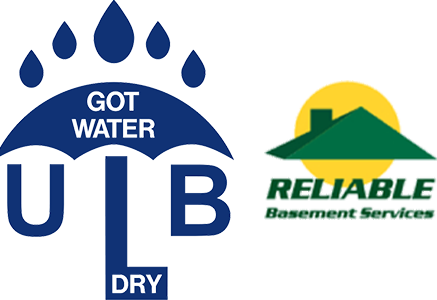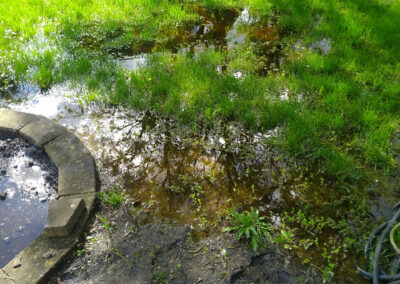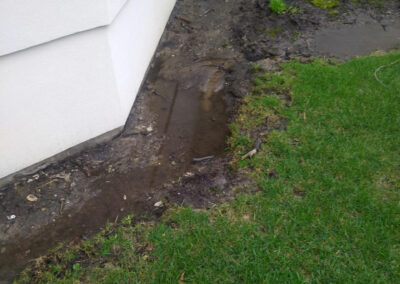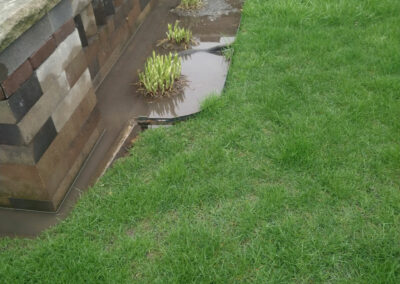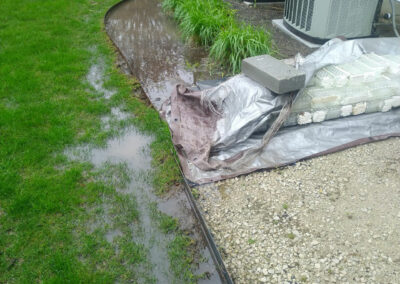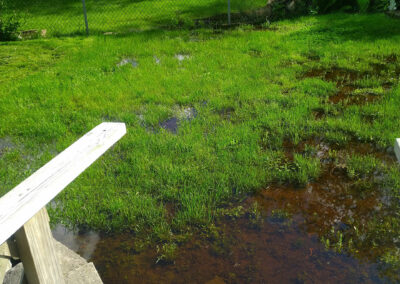Water Drainage
Waterproofing Water Drainage Solutions
A properly functioning drainage system is essential to the longevity and structural integrity of any property or landscape. Without it, you can expect erosion, lawn drowning, and leakage into the walls of the home and the basement, where the moisture turns to mold and leads to other expensive-to-fix issues.
Erosion is a particularly egregious problem that is a result of heavy precipitation. Under these conditions, the soil starts to run off into your yard, and the problem can get to the point where it damages your entire landscaping. To make things worse, erosion not only affects the attractiveness of your yard, it also reduces your overall yard area, thus reducing your property value. Not to mention that, over time, this shifting of soil will start to affect the foundation, moving it out of position and causing it to sink. Once the problem gets to this point, repair costs can become significant.
Of course, not all drainage issues lead to erosion, but a great deal of damage can still be done. Standing water will form on your property and will lead to excess moisture in the soil, drowning your grass and other plants. Furthermore, if these puddles of water start to form and stagnate, they will become breeding grounds for insects such as mosquitoes. Luckily, proper drainage can prevent all these issues.
Proper Backyard Drainage Using Slopes
One of the best ways to make sure that your yard is drained properly is to have it slope away from structures. The process of ensuring this is called grading. There are two general categories of grading: rear to front drainage, and split drainage. In all cases, water will be drained to municipal roads. However, when using split drainage, the front lot of the property is drained to the municipal road, and the back lot is drained towards the back of the yard, and onto a neighboring property, which is already built with a rear to front drainage slope. Once on the neighboring property, the water will be drained on the municipal road. Rear to front grading systems are designed to drain the water directly to the municipal roads, and these properties will handle higher volumes of water because they will be receiving water from neighboring properties.
These two categories have several types of grading drainage within them. One example is the split drainage system to a rear yard swale. A swale is a “V” shaped channel that collects water from two different slopes and flows it into a collection point. In this type of grading, the property is split into three parts, with the home being at the highest point and between two slopes — one that connects to the road, and one that connects to a third slope, forming a swale.
Each of these options will also require maintenance and care in order to ensure that they work properly. There are several different measures to protect both your drainage conveyance measures and your home from rainwater. It’s important to not build extra structures or make modifications near property lines, because that’s where drainage swales are usually located. You’ll also want to routinely trim the grass and weeds around the edges of your property lines to keep the swales unobstructed. All of these methods and more will be further explained by your contractor.
The Right Water Drainage Option for Your Property
So, which is the best backyard water drainage solution for your property? The best way to find out is to get in touch with one of our team members who can provide a professional assessment and recommend the ideal course of action. If you would like to find out more, contact ULB-DRY Waterproofing directly today! We are the premier waterproofing company serving the Chicagoland area.



